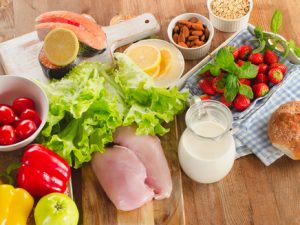Belonging to the cucurbit family, like melon and watermelon, this large-fruited plant is an essential source of carotenes, which gives it, among many others, antioxidant properties for our body. Find out more about this fruit in the following lines.
The gourd is a herbaceous plant with large leaves and fruits that has its origin in Asia, thousands of years ago, already in the time of Moses. From there, it spread to countries with a warm climate, reaching Europe at the hands of the Spanish in the 15th century.
It is a fruit that can present, depending on the variety in question, more spherical or flattened shapes, larger or smaller, and of different shades ranging from the most intense orange to yellow, white, red;… In general, they present a very mild taste to something sweet.
Nutritional properties
Pumpkin is a food that is composed, for the most part, of water. In addition, it has a low contribution of carbohydrates and fats, which makes it a recommended food in weight loss diets. It also has remarkable amounts of fiber, which gives us a feeling of satiety and improves our intestinal transit.
It is rich in provitamin A, beta-carotene, which gives it essential antioxidant properties, is essential for sight, hair, bones, and skin, and boosts our immune system. Its contribution to vitamin C is also significant and, to a lesser extent, vitamin E (both reinforce the antioxidant action) and some group B.
It is a food rich in potassium, as well as in phosphorus and magnesium. In smaller quantities, it contains calcium and iron.
Pumpkin varieties
Although it is a typical autumn fruit, due to the different varieties that exist, we can find pumpkins on the market for most of the year:
On the one hand, we have winter squash, which includes sweet varieties with thicker skin, but less water content and is drier than summer squash. Due to its thicker skin, its shelf life is longer. This group would include the banana squash, the cider or squash (more yellow in color and gelatinous pulp), and the confectionery squash, which can be of different colors and shapes, and is from which the hair is obtained of Angel.
Summer squash, on the other hand, has thinner skin and a lighter color. Its seeds are softer, and it is kept for less time than the winter one. Within this group, we find bonetera squash (which can be white, green, or yellow), spaghetti squash (which is yellow), and rondín squash (orange).
How to cook it
We must remove the skin in the varieties belonging to winter squash, as it is too thick to cook. The pulp of these pumpkins can be eaten raw and also fried or au gratin.
The pumpkin confectionery is from which the angel hair is extracted, used as a filling in cakes. This pumpkin is also the most common for making jams.
Summer squash should be dried before eating because they contain a large amount of water and are the most common varieties to eat raw.
The pulp accompanies other dishes, giving them a milder touch of color and flavor and making creams or purees.
Famous pumpkins
One of the most popular traditions of the Halloween party is emptying and carving pumpkins:
- The top is cut.
- The pulp is emptied (to put a candle inside).
- A terrifying face is carved into the crust.
It is known as Jack-O’-Lantern, and although popular belief establishes its origin in the United States, this tradition is born from an old folk tale in Irish and Scottish lands. Another famous pumpkin is the one from the Cinderella story, in which the fairy godmother turns into a carriage to take her to the ball but, after midnight, will return to its usual shape.
Halloween pumpkin
On an excellent fall sleep, some seasonal foods can give you a wrench. During these months, autumnal asthenia may appear, linked to the drop in temperatures and the decrease in daylight hours.
Some people suffer from the seasonal affective disorder, a specific type of depression during the fall and winter months whose symptoms include fatigue, hopelessness, weight gain, or sleep imbalances, sleeping too little or too much. Researchers link this problem to serotonin imbalances, excess melatonin production, and vitamin D deficiency.
In addition to respecting regular sleep schedules under the circadian rhythm, rest in an excellent, dry, dark, clean, and calm down, or get regular exercise, fall feeding can also help you sleep.
Take advantage of the tasty seasonal vegetables, fruits, and seeds to ensure a night of sound sleep.
Chestnuts, almonds, and other nuts
Chestnuts
Typical of the autumn season from October, chestnuts are ideal nuts for athletes due to their richness in healthy carbohydrates, but they also help to sleep better due to their content in melatonin, the hormone responsible for regulating circadian sleep cycles.
According to data from the Sleep Foundation, almonds provide high levels of magnesium that induce rest. A handful of them (28 grams) gives you 20% of the recommended daily amount.
Any dried fruit is great to improve your rest. In addition to being rich in healthy omega-3 fats or proteins, pistachios, walnuts, or peanuts will also provide you with magnesium and melatonin, making them a healthy snack before bed.
Apples
The end of summer is the right time to enjoy the apple, a crunchy, digestive fruit loaded with vitamins.
According to Eat This, Not That, the amount of vitamin C in apples helps lower blood sugar and blood pressure and improve breathing, which is key to falling asleep faster.
Another nutrient that helps you fall into the arms of Morpheus is phosphorus, a mineral with sedative properties that is ideal for fighting insomnia.
Sweet potato
In addition to being a great source of complex carbohydrates, these colorful tubers are rich in potassium, an electrolyte that helps relax muscles and improve the quality of your rest.
Sweet potato also promotes GABA secretion in the brain, which is a neurotransmitter that induces relaxation.
In addition, its richness in fiber stands out: in a 2016 study, a higher intake of this nutrient was correlated with “more time in the stage of deep sleep and slow waves.”
Pumpkin
Pumpkin seeds or seeds are also excellent sleeping companions. They contain 600 mg of tryptophan per 100 grams and a good amount of zinc, which helps the brain convert tryptophan into serotonin, the precursor of melatonin responsible for regulating sleep.
They are also rich in magnesium and key to combat excess stress and fatigue linked to sleep problems.
Pumpkin has many other properties: rich in fiber, lowers blood pressure, improves vision, and benefits the heart.






























Add Comment